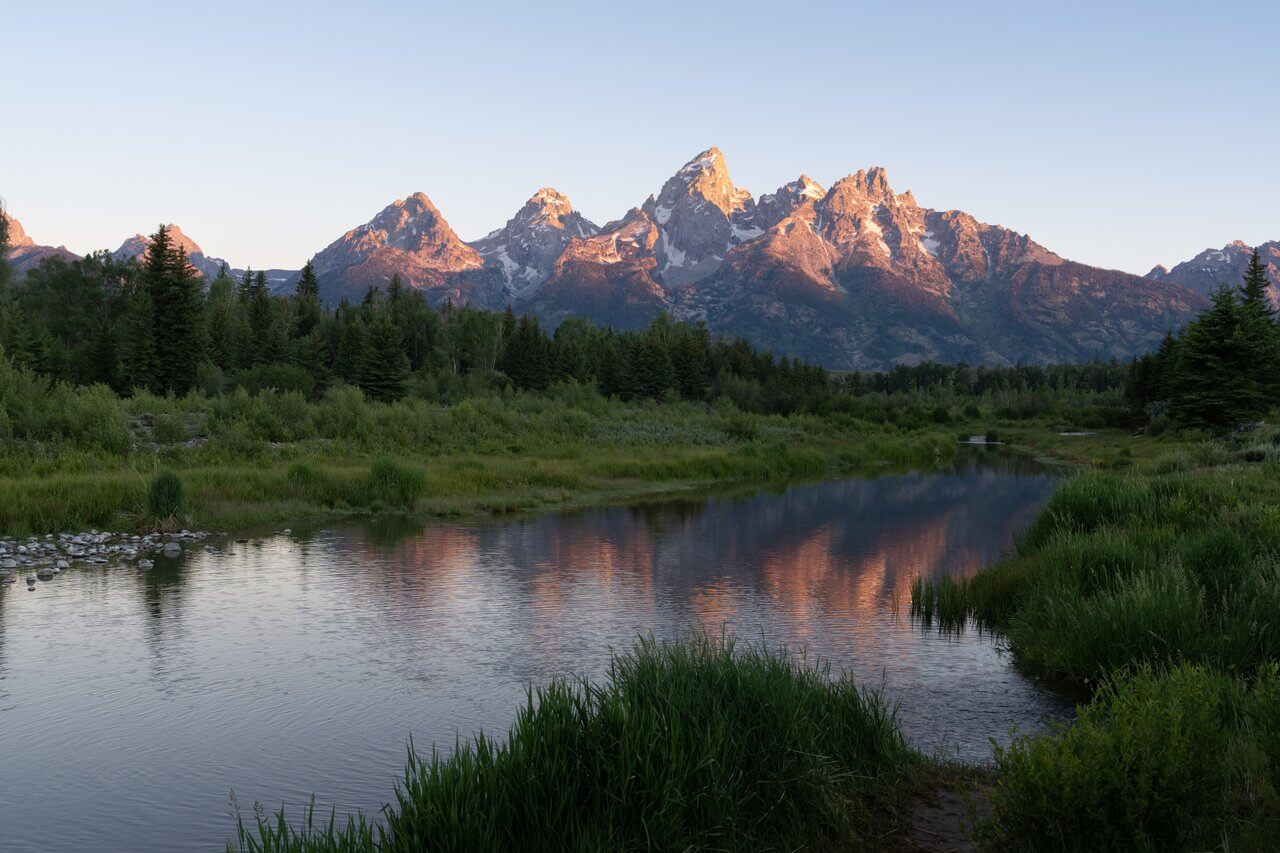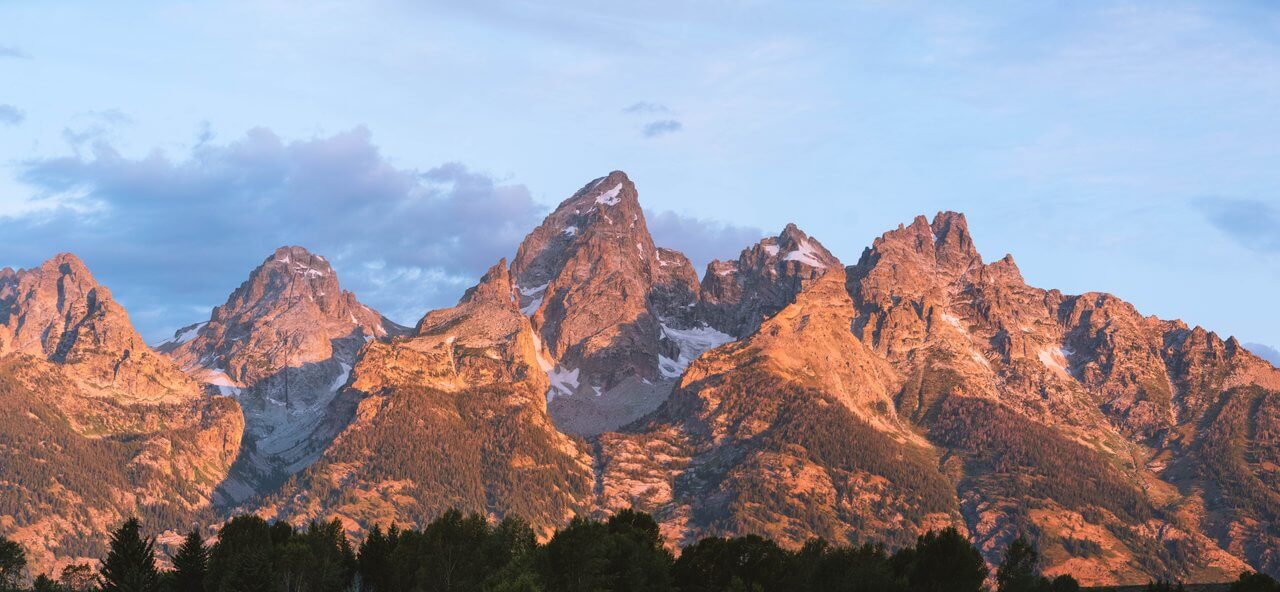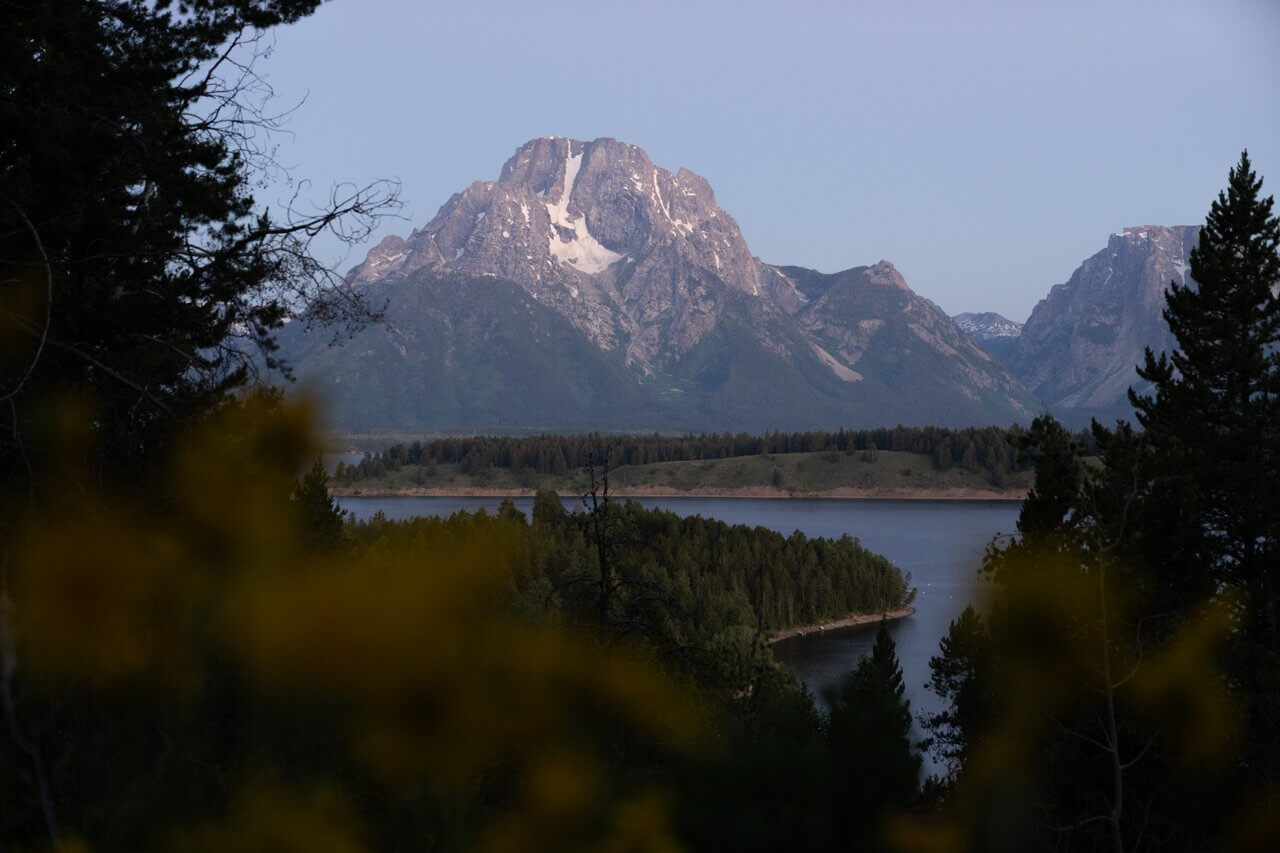Where Did the Mountains Around Jackson Hole Get Their Names?

Looking up at the Tetons and other ranges that frame Jackson Hole, you’re filled with wonder and curiosity. How did these massive mountains form? What are they made of? And how did they get their names? Here, we explore the origins of the last question and the stories behind these iconic mountains and their equally impressive titles.

The Tetons (Grand, Middle, South)
When French-Canadian fur trappers were exploring Jackson Hole, they noticed the Teton range from the western side resembled breasts and dubbed them “Les Trois Tetons,” the French phrase for “the three breasts.” The Tetons were called many names over the years, with Native people who lived in the region sometimes calling them “The Three Brothers” and “The Hoaryheaded Fathers,” among others. The Tetons were also used as a sight marker when people were crossing Union Pass, and as such, Wilson Price Hunt began calling them “Pilot Knobs” in 1811. However, the Teton name stuck, and the Bonneville Map of 1837 was the first to officially designate the name. The Grand Teton is the northernmost and tallest of the three, at 13,770 feet, with the Middle Teton to its left and South Teton the furthest south.
Teewinot
Native people have lived in the Jackson Hole area for more than 11,000 years. When early trappers arrived in Jackson Hole, it was Shoshone territory. In the Shoshone native language, the word “Teewinot” means “many pinnacles.” Teewinot is one of the peaks in the Cathedral Group (Teewinot Mountain, the Grand Teton, and Mount Owen), and at more than 12,300 feet, it is one of the park’s tallest peaks.

Sheep Mountain (locally-known as Sleeping Indian)
Bighorn sheep are known to graze on Sheep Mountain, providing its simple-but-effective name. The mountain’s unofficial name is derived from its appearance. “Sleeping Indian” is the mountain’s nickname, as the long ridge appears to be a Chief laying down, with steep limestone cliffs resembling a ceremonial headdress and a notch looking like a neck, chin, and crossed arms

Mount Moran
Thomas Moran was a landscape painter who joined the 1872 Hayden expedition that explored Yellowstone National Park. Known for his watercolors and sketches that helped showcase the local area to people back East, Mount Moran was named in his honor. Ironically, he never saw Mount Moran when he was alive, though he did see the western side of the Tetons.
Mount Owen
In 1898, William O. Owen joined Reverend Franklin Spencer Spalding and Jackson Hole ranchers to climb the Grand Teton. Today, 12,933-foot Mount Owen—part of the Cathedral Group—is named after Owen and his team’s feat. The route they took to ascend the Grand is now called the Owen-Spalding route.